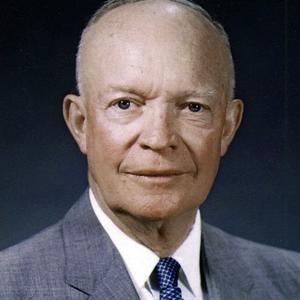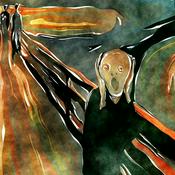1 episodios

Dwight D Eisenhower - Audio Biography
14/11/2023 | 3 min
Welcome to the Dwight D Eisenhower Audio Biography.This audio biography is sourced from The White House and recorded for your enjoyment by Quiet Please Studios. If you enjoy this be sure to check out Dwight Eisenhower Great Speeches podcast. Now for the Dwight Eisenhower Biography.In the grand narrative of America's journey, few chapters are as rich with courage, leadership, and a steadfast vision for peace as that of Dwight D. Eisenhower. Commanding General of the victorious forces in Europe during World War II, Eisenhower brought to the Presidency not just his military laurels but a deep, unwavering commitment to steer the nation through the choppy waters of the Cold War.Born under the wide Texas sky in 1890 and raised in the heartland of Abilene, Kansas, Eisenhower was the third of seven sons. A high school star in sports, he carried his competitive spirit to West Point, setting the stage for a life dedicated to service. In the warm expanses of Texas, as a young second lieutenant, he met and married Mamie Geneva Doud, beginning a partnership that would endure through decades of public life.Eisenhower's early Army career was a study in excellence and dedication. He served under giants of military leadership — Pershing, MacArthur, and Krueger — honing his skills in the art of strategy and command. With the world thrown into turmoil by Pearl Harbor, Eisenhower emerged as a pivotal figure, planning the Allied Forces' landing in North Africa and later orchestrating the historic D-Day invasion as Supreme Commander.Post-war, Eisenhower's journey took him to the helm of Columbia University and then to the forefront of the NATO forces, where he would soon be called upon to lead not just soldiers but a nation. In 1952, propelled by the affectionate slogan "I like Ike," Eisenhower swept into the Presidency with a vision to temper the global tensions of the Cold War era.Eisenhower's presidency was marked by a delicate balancing act — negotiating peace while maintaining military strength. The truce in Korea in 1953 and the neutralization of Austria marked significant steps in softening global hostilities. Yet, the development of hydrogen bombs by both the U.S. and Russia cast a long shadow, compelling Eisenhower to propose bold initiatives like the exchange of military blueprints to promote transparency and trust.Amidst these global strides, Eisenhower faced personal challenges, notably a heart attack in 1955. Yet, his resilience was as unwavering as his commitment to service, and he returned to win a second term. His domestic policies walked a line of moderation, continuing key social programs while advocating for fiscal responsibility. A champion of equality, he took decisive action in the desegregation of schools and the armed forces, affirming the principle that in America, there must be no second-class citizens.Eisenhower's tenure saw not only the quest for peace among nations but also a pioneering venture into peaceful nuclear energy, his “atoms for peace” program. As he left office for his farm in Gettysburg, he voiced a prayer for peace and a warning about the perils of prolonged military spending — words that resonated with poignant urgency when he passed away on March 28, 1969, after a long illness.In Eisenhower's story, we find the essence of the American spirit — a relentless pursuit of peace, underpinned by strength, guided by wisdom, and marked by an unyielding commitment to the principles upon which the nation was built.Thank you for listening and you can enjoy our other Audio Biographies just by searching Audio Biography where ever you listen to your podcasts. For more on Dwight Eisenhower. Search Dwight Eisenhower - Great Speeches and hear Eisenhower is his own words.This content was created in partnership and with the help of Artificial Intelligence AI
Más podcasts de Gobierno
Podcasts a la moda de Gobierno
Acerca de Dwight D. Eisenhower - Audio Biography
Escucha Dwight D. Eisenhower - Audio Biography, El Gesto Más Radical y muchos más podcasts de todo el mundo con la aplicación de radio.es

Descarga la app gratuita: radio.es
- Añadir radios y podcasts a favoritos
- Transmisión por Wi-Fi y Bluetooth
- Carplay & Android Auto compatible
- Muchas otras funciones de la app
Descarga la app gratuita: radio.es
- Añadir radios y podcasts a favoritos
- Transmisión por Wi-Fi y Bluetooth
- Carplay & Android Auto compatible
- Muchas otras funciones de la app


Dwight D. Eisenhower - Audio Biography
Descarga la app,
Escucha.

































